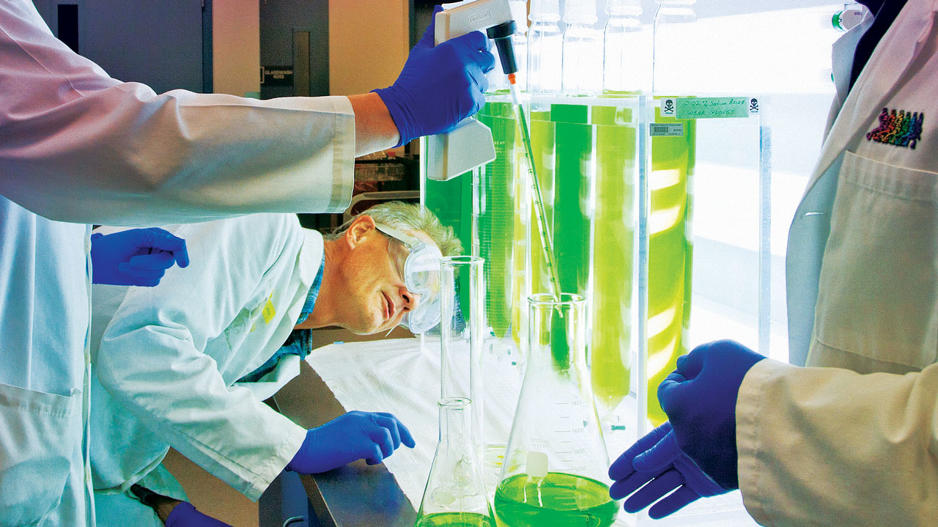Eight VCs’ Predictions On The Year Ahead In Innovation
Like most of the globe, the tech world had a peculiar 2016. Last year, phones blew up, half a billion people lost their sensitive information, “fake news” expanded its reach on Facebook, and more than a few Pokémon hunters found themselves in hospital gowns.
Nonetheless, investment activity held steady in 2016, and venture capitalists’ outlook was optimistic as the eventful year drew to a close. How come? Here’s what eight top tech investors say they expect to happen in the year ahead, based on the way things are shaping up right now.
Relaxed Regulations Push New Products To Market
The outcome of the presidential election surprised the tech world, but some in Silicon Valley have already begun to see silver linings.
Ian Patrick Sobieski, managing director of Band of Angels Acorn Fund, LP, acknowledged “a lot to fear with the wild card in the White House, but one can hope that the promised reform of the FDA licensing process makes it cheaper for promising innovation to get to market without compromising safety.” If that happens, Sobieski expects, “there will be more seed investment for medical devices and hence more innovation in these areas.”
Biotech Gets A Much-Needed Cash Infusion
Another Band of Angels VC, Amit Kumar, believes biotech may receive a similar boost. “There are tremendous new innovations in cancer, heart disease, autoimmune disorders, and other areas that are languishing due to a lack of early stage funding.” There may be a perfect storm brewing that could change that, he says.
“With renewed vigor in the capital markets for biotechnology, potentially a less burdensome regulatory environment, and dramatic advances through a coupling of informatics and biology, I expect to see more capital flowing to risky yet innovative early-stage life science and biotech companies.”
Band of Angels is Silicon Valley’s oldest seed funding organization. So far, the group has seen 55 profitable M&A exits and 10 Nasdaq IPOs; 17% of its current portfolio is in life sciences companies. Kumar adds, “While many of these biotech companies will fail, a notable portion . . . will be successful financially and, more importantly, will enable new life-saving products for millions of suffering and often terminally ill patients.”
AI Transforms Health Care, Education, And More
As some see it, machines are just as likely to help save lives, and 2017 may be their breakout year. “I’m excited to see machine intelligence begin to impact and transform the health care industry,” notes Jocelyn Kinsey, a senior associate at DFJ.
“As a growth investor, I hope 2017 will be the year health care artificial intelligence (AI) is adopted within the clinic.” There are a number of opportunities already on the horizon, Kinsey says, including “assisting physicians with prediction and detection of disease based on sequencing and genomic data, more accurate diagnosis using advanced medical imaging analytics, and personalized treatments for patients with chronic diseases.”
Shadi Mehraein, a managing partner with the women-led market focus Rivet Ventures, is also optimistic about AI’s expanding roles, not only just in medicine but also in education and commerce, too. “We’ll also see interactions with search and mobile increasingly moving to voice and images. As this continues to shift,” Mehraein expects, “vertical applications for AI will emerge [in both] the enterprise and consumer spaces.”
Robots Begin To Reverse Offshore Manufacturing
“2016 was the year when the cheapest robot in history has been launched on the market,” explains Ewa Treitz, venture partner with Europe-based Black Pearls VC, referring to Franka Emika, a programmable robotic arm that’s roughly one-third the price of its competitors. “In 2017, it will be available for commercial purchase and will first hit the electronic assembly industry,” Treitz notes.
Right off the bat she expects it to “replace much human labor in the most repetitive manufacturing tasks. This will spur discussions about the future of employment in the automated world, but also bring manufacturing back to the high labor-cost countries,” including Germany and the U.S. (The only catch, of course, is that manufacturing jobs may not come with it.)
Data Innovation Goes Open Source
Won’t robots and AI need even better data? That has to come, too, according to Carl Fritjofsson of Creandum. “We’re sure to see an evolution with sharing and collaboration of data, similar to how open-source software development allows thousands of developers to create products together with no single entity claiming the rights to the innovation.”
“Instead of confining data to internal silos, by contributing and having access to a larger data set across organizations,” says Fritjofsson, “each participant of the data network will benefit instantly.”
Driverless Cars Reshape Our Roadways
Driverless cars may be a major beneficiary of the combined data that Fritjofsson foresees. “I’m looking forward to seeing the first waves of autonomous vehicles hit the roads,” says VC Arianna Simpson. “2016 was a year of research and development with a smattering of test runs, but in 2017, we’ll be seeing them start to operate in more meaningful numbers.”
That could lead to some market consolidation, Simpson expects. “From an investment perspective, I expect to see a lot more M&A in the space as well. Cruise and Otto were major hits in 2016, and there’s going to be a lot more where that came from.”
Voice-Based Tech Finds Its . . . Well, Voice
For many of these innovations to take off as VCs predict, users will need to be able to talk to their cars, robots, phones, and other AI-powered technologies without frustration. As Anarghya Vardhana, a senior associate at Maveron, sees it, that’s setting up 2017 to be a slam-dunk year for voice-driven technology.
“Voice-based input is the easiest, most efficient, and best way to interact with our devices,” Vardhana claims, even “though this type of interaction is yet to truly take off in the consumer space.” That’s set to change, she believes. The year ahead may see an “increase in people interacting with technology—phones, computers, game consoles, TVs, and more—with their voice, and an increase in the use-case for voice-based input.”
Vardhana finds that possibility exciting and hopes consumers do, too. “Imagine talking to nearly all the technology around you, and for that technology to accurately and intimately understand you. That is the future.”
Beck Bamberger founded BAM Communications in 2008 and writes regularly for Forbes, Inc., and The Huffington Post about entrepreneurship, public relations, and culture.
Fast Company , Read Full Story
(80)



